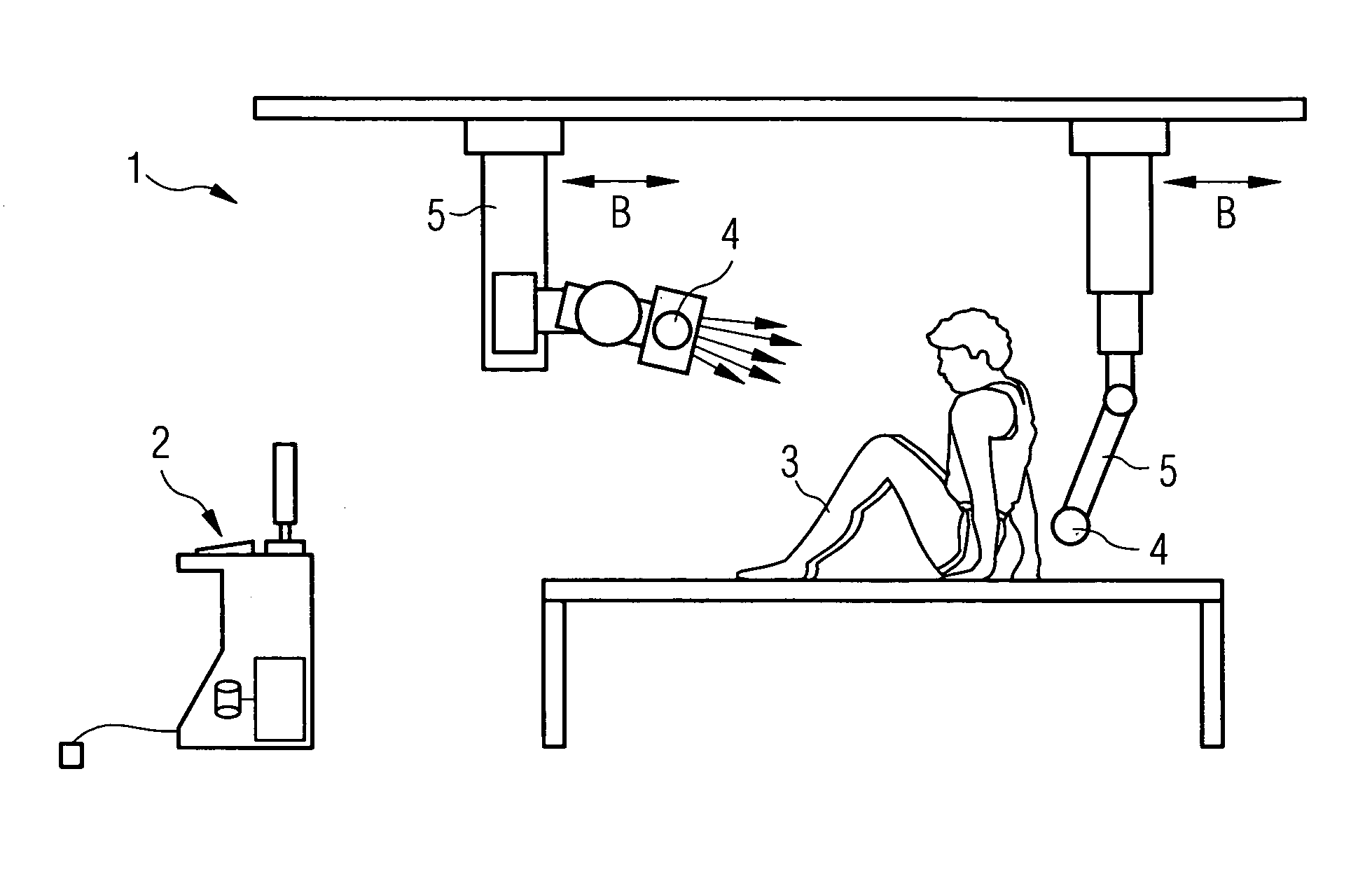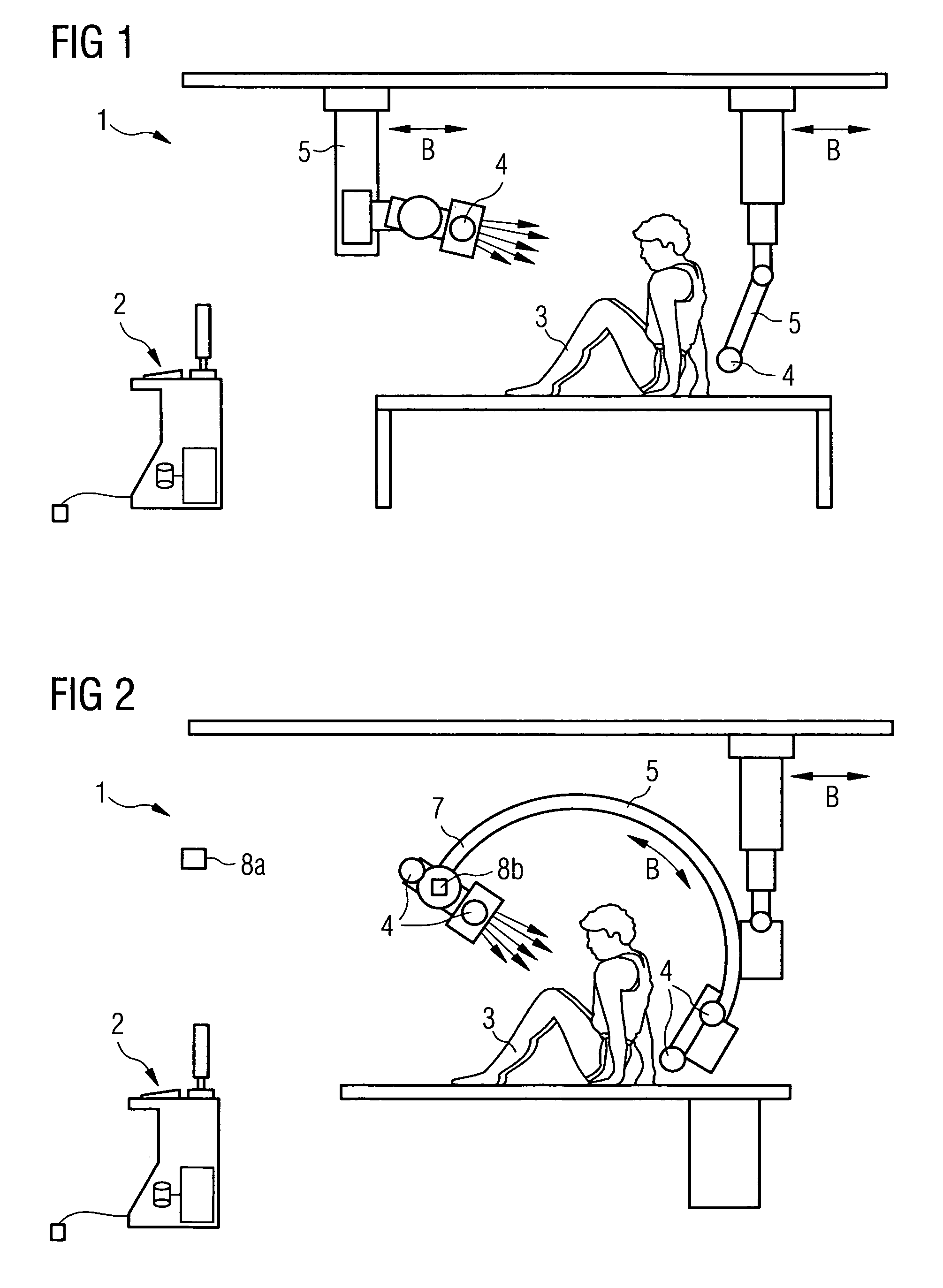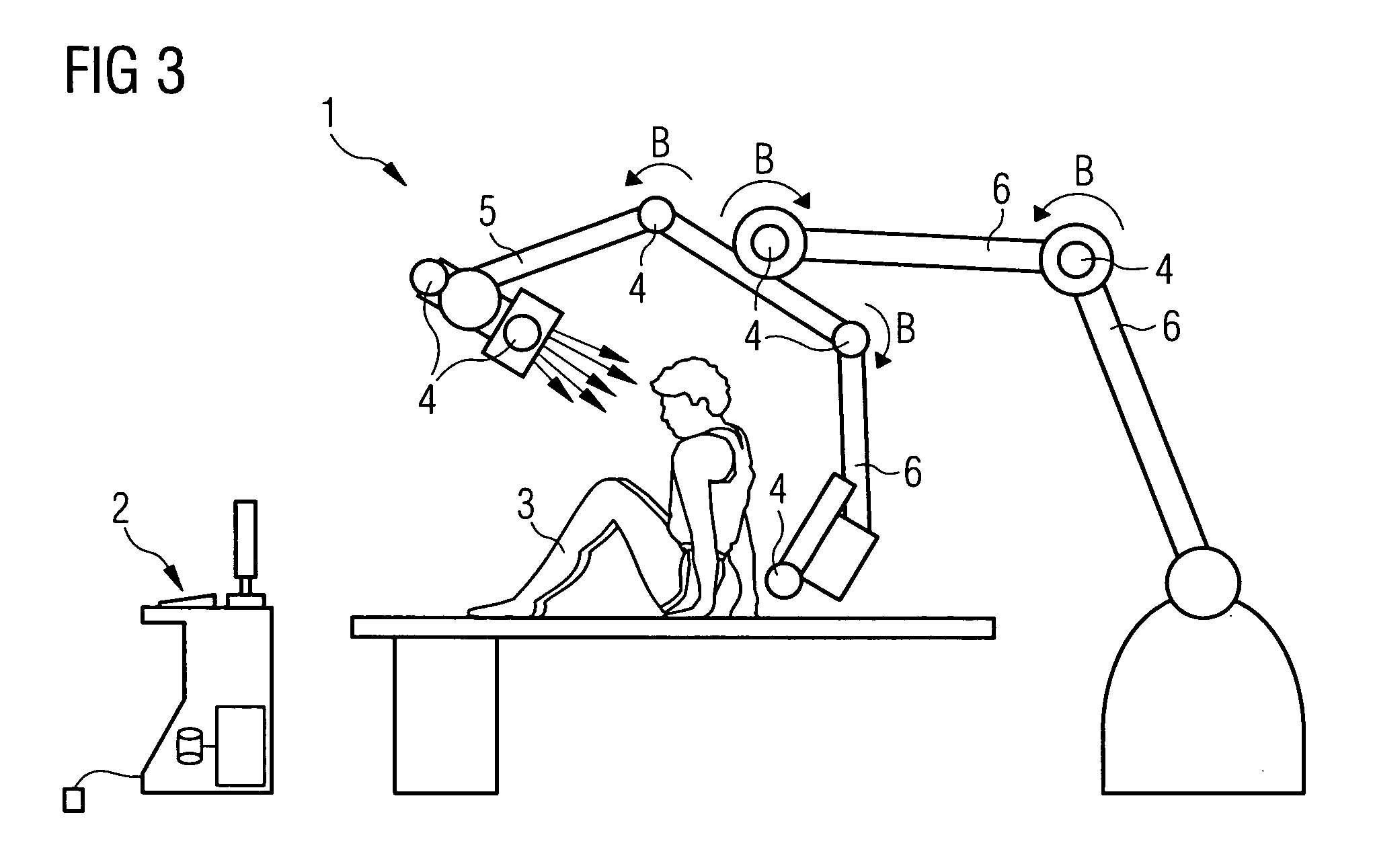Medical imaging system and anti-collision method with a controllable arm
a technology of medical imaging and controllable arms, which is applied in the field of medical imaging systems, can solve the problems the patient, the possibility of a collision between the moveable parts, such as the robot arm, and the patient, and achieve the effect of a faster, more precise and simple anti-collision system
- Summary
- Abstract
- Description
- Claims
- Application Information
AI Technical Summary
Benefits of technology
Problems solved by technology
Method used
Image
Examples
Embodiment Construction
[0026]FIG. 1 shows a medical imaging system 1 with a schematically illustrated patient 3, which is positioned on a table. A 3D stand for the x-ray emitter (depicted in the left of the image) and a 3D stand for the x-ray detector are positioned on both sides of the patient, so that fluoroscopy recordings of the lungs of the patient can be produced for instance. For adjustment purposes, both stands can be moved in the direction of motion B or vertically thereto. Furthermore, the x-ray detector can be rotated. This moveable part 5 is provided with a sensor 4, and, similarly to the x-ray emitter, is also equipped with a sensor 4. The two sensors 4 allow corresponding distances between the moveable parts 5 and the surface of the patient 3 to be detected, and transmitted to a control device 2, which controls the movement B of the moveable parts 5.
[0027]FIG. 2 shows an x-ray C-arm system, for cardiology or angiography for instance, with sensors 4 on correspondingly exposed points of the x-...
PUM
 Login to View More
Login to View More Abstract
Description
Claims
Application Information
 Login to View More
Login to View More - Generate Ideas
- Intellectual Property
- Life Sciences
- Materials
- Tech Scout
- Unparalleled Data Quality
- Higher Quality Content
- 60% Fewer Hallucinations
Browse by: Latest US Patents, China's latest patents, Technical Efficacy Thesaurus, Application Domain, Technology Topic, Popular Technical Reports.
© 2025 PatSnap. All rights reserved.Legal|Privacy policy|Modern Slavery Act Transparency Statement|Sitemap|About US| Contact US: help@patsnap.com



